 An Interview with Fine Art Photographer John D'Onofrio 1. What equipment to do you use? What camera? Currently I use a Canon 5D Mk III. Love it! Before that I worked with the original 5D, which was also a joy to use. I use only two lenses, both Canon L series zooms. One is a 24-105 mm and the other is a 70-300 mm. I’d utilize more lenses, but I do a bit of backpacking and can barely carry these along with my beloved Benro carbon-fiber tripod. I was late to go digital, made the switch in 2008 – I was really attached to my Nikon SLR and Nikon lenses. Shot an egregious amount of slide film, generally Velvia 50. I was prompted to make the switch while crossing the thigh-deep mouth of a river on the island of Kuai’i. I stepped on an underwater rock and it overturned, leading to a full-on dunking in what was essentially salt water. That was it for my Nikon gear. I said goodbye to film that day. It was a gift! 2. Technical Advice? The only technical advice that I could offer is to move beyond the technical. That is to say, master the mechanics to the point that they require no attention, so that full concentration can then be devoted to the compositional elements. A few basic thoughts: Obviously, you want very sharp images – I use a hood loupe that my friend Lance gave me. It really helps for checking critical focus in the field. And I use a tripod almost all the time. I like the thoughtfulness of composing on a tripod. It’s a slower process and - while not without its challenges (mostly tripod schlepping) – offers more control over the technical variables. 3. Creative Advice? I’ve been an artist for almost 40 years – first as a painter and musician, then a photographer - and for me, it’s been a long, enjoyable process of figuring out how to isolate the essential core elements of a composition. I think of it in terms of music – the music I love isn’t about an impressive succession of notes, it’s about finding the heart, the center. The roots of the chords. A process of exclusion as much as inclusion, letting the essential breathe. 4. Post Processing - Favorite techniques? I love post processing – I enjoy spending some more quality time with whatever subject I had been drawn to with my lens. Usually, this brings up good memories of beautiful places and times and it’s so satisfying to use post processing techniques to highlight whatever caught my eye in the field. And I’m often grateful for the opportunity to mitigate flaws – no shortage of those! The key to post processing, from what I’ve observed, is subtlety and restraint. I’m not necessarily a big fan of HDR, although I have seen it used well. My main objective is simply to bring out the original idea I had when I took the photograph, not to come up with a new idea. Of course, sometimes that happens anyway - with good results. 5. Post Processing - Software used? I use Adobe Lightroom pretty much exclusively – I recently switched over to their cloud-based version. Major improvements in the upgrade. The ability to erase with a brush in the graduated filter module is very nice. 6. Technical challenges? As someone who has been using a camera for a long time, I find the technology utilized in modern cameras has minimized the technical challenges to the point that anyone with a hankering to do so can readily master them. Honestly, it’s not rocket science to figure out exposure and focus. The ability to review images in the field should not be taken for granted – it was a game-changer. I remember the first time I photographed the aurora borealis with digital equipment, after many marginally-successful attempts over the years with film. The ability to make adjustments and corrections is enormous. The biggest challenges that I face are keeping blowing sand out of my lenses and hauling my gear that last mile uphill to camp. 7. Creative Challenges? The big challenge is simply to see. To really see, in a focused way. We tend to be pretty distracted, always multi-tasking in our heads. To really see, we have to devote 100% of our consciousness to the visual realm. It’s almost a meditation. It takes practice. 8. Artistic signature that conveys your style? As I said, I like details. I like abstract compositions where the subject itself is secondary to the composition, perhaps even unrecognizable. When you remove the element of the familiar, the viewer is freed from comparing it to other images that they have seen of similar subjects. Like a painting. But I also like big-picture stuff, so long as there’s depth. I like a composition that includes both a strong foreground and background in these situations. I’m also partial to asymmetrical balance. 9. Favorite Subject? My favorite color is texture. I love the evidence of passing time on objects, whether it’s a glacier or a weathered tree. The stories that surfaces tell are compelling to me and add depth to the color and interest to the composition. Of course, as Ansel Adams taught us, we are always photographing the light so it compels us to find that special light, often in what are otherwise less-than-ideal conditions. Hence the tripod, cable release and rain gear. 10. Favorite Location? Well, I love the landscapes of Cascadia – the mountains, beaches, forests, rivers, lakes and salt marshes. The diversity is amazing and inspiring. I’ve had some great experiences in the arctic – those landscapes are so raw and inviting. I also love the Colorado Plateau and particularly southern Utah and northern Arizona. It’s a wonderland. I’m drawn to the slickrock and geological oddities – and reflected light off of canyon walls. I’ve been going down there almost every spring since the 70’s and I’m still finding new places that blow me away. Visit John's website...
0 Comments
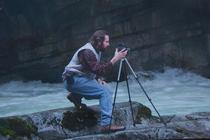 I use a Canon 5D Mark 2 with 17-40mm L, 50mm and a 75-300mm lens. I have always believed that It’s not about what equipment you use but what you do with what you have. You don’t have to wait until you get your dream camera to create great artistic images. My favorite subject is the wonders of nature. My favorite location is Yosemite. I think there are several processes in creating photo art. first a desire and vision of what you want to create. I call it “My shot” of a particular scene. Second there is “the moment” when you actually go out and take the image. This is my favorite part because I get to really be at these lovely places. Third is post processing. I use Lightroom and photoshop primarily. I am really getting into Luminosity masking also. I love to perfect my vision with this process. Finally the last process is “The Performance” when you show your work to an audience. This last process pays the bills and fills my creative tank to get inspiration to go out and do it again. One Place… At One Time. Jeff Aspnes – Photographer I find there are special places that bring me moments, one at a time. They are scenes that I have to stop and take time for. Places I have to BE at. I truly believe that as humans we are given a gift, to notice and adore the beauty of nature. Without our “looking” into and “seeing” the wonders of this world, wouldn’t they be less artistic… and a bit less wonder filled? I think so. Visit Jeff’s website… Here are ten special places to just be at: 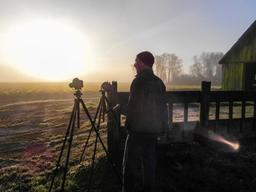 An interview with Fine Art Photographer, John Holtman What equipment to do you use? What camera? For a camera, I use a Sony A7r. It is the perfect camera for me. The electronic viewfinder is great for focusing my old manual lenses. And it's particularly well suited for night photography. I use vintage Leica, Nikon and Olympus lenses. My favorite would have to be a 1949 Leica Summarex I found in Portland. There is just something special about that lens. Technical Advice? I will pass along some great advice from Dick Garvey: Use a single lens for an extended period. Get to know it inside and out. I have often gone on vacation packing only a single 50mm lens. Far from feeling constrained, I find it completely liberating. No messing around in the camera bag looking for the right lens. Just living and seeing in the moment. Not mention how much lighter the kit will be. Creative Advice? I spend a fair amount of time looking at other people's photos. I have a bookshelf full of photography and other art books that I will go to when I need a little inspiration. Post Processing - Favorite techniques? I do quite a bit of image stitching for panoramas. I start by using three or more images using a shift lens to eliminate distortion. This makes the stitching very simple while retaining the original resolution of each image. Post Processing - Software used? I use Lightroom for organizing and the basic stuff and Nik software for more serious editing. Between these two, I can accomplish everything I need. Technical challenges? I have invested more time and energy into printing than any other technical challenge. I spent a couple years experimenting with my own process of printing on watercolor paper and then adding several layers of gloss varnish. I really like the look of it and I like having more of a physical input into the final product. The downside is it takes about five days to make a finished print. Creative Challenges? You could ask me this question on any given day and I would probably give a different answer. I suppose I'm looking to convey meaning in what I do. But what is it I mean to say? I'll have get back to you on this one... Artistic signature that conveys your style? I have always been fascinated by things that are on the edge of visibility. This probably shows up through a lot of images of night, fog and other things obscuring clear vision. I suppose I like the idea of a little mystery in many things, to maybe wonder a little, and make up for yourself the story behind a picture. Favorite Subject? It would be difficult to come up with a single subject. But, I do love shooting at night. Add in a little fog and some street lights and that would be just about right. Favorite Location? There's enough places right here in Skagit Valley to keep me busy for years. I also love shooting in cities: Seattle, Portland, Vancouver. We made a trip to Paris a couple years ago, which is as close to photography heaven as I'll likely get. Throw in a shot of the yellow jersey in the final stage of Tour de France on the Champs-Elysees, and yeah I guess that was a pretty good spot... Visit John's website...  An Interview with Fine Art Photographer, Sally Halvorsen What equipment to do you use? What camera? I use a Nikon D750 the Nikon 105mm macro lens, Kenko Extension Tubes, Teleconverter, Diopters and a Gitzo “Explorer” Tripod with an Acratech Ball Head, reflectors Technical Advice? I shoot shallow and I will use as many tools at once as I can. I love to experiment with extension tubes or different lenses. I don’t limit myself because it’s not a macro lens, any lens you can add extension tubes too will allow you to get closer. Basically any lens I have that will shoot at 2.8 or better I use. I also constantly focus in and out to see what comes into view. I’ve taken some really amazing images by doing that. I also always use a tripod and the head I upgraded too last year allows me flexibility. I think that is one of my most important upgrades. I was inhibited by the head I had before, I felt as though I could not move in the direction I wanted to move into without changing the tripod. It was frustrating, so when I found a ball head I thought would give me the flexibility I wanted I jumped at it. I have to say it has provided a lot more range than the head I had before but at times it’s still limiting. I think the only way to avoid that is to shoot hand held and that is almost impossible for macro. Creative Advice? Don’t let your mind be your limit. Step outside the box and experiment with the tools you have. Try things even if you don’t think they will work and then work on them even more to see if you can make it work. I don’t give in. If I have an image in my mind I will continue to practice until I can either get what I’m envisioning or I prove to myself I can’t do it. I’ve taken hundreds of images that I deleted because I could not get the composition I wanted or I could not get the background the way I wanted. But I exhausted every effort before I gave in. Some photographers look for the background of their image before they find their subject, but I do it just the opposite. I alway find my subject before I find the background. I think you have to decide what will work best for you, it’s not easy either way. You may see an amazing background but not have a subject for it or you may have your subject but not have a background. If I’m shooting in the winter I create my own background, I do this by using the other flowers in the arrangement or plant. I will also use fabric, pictures, or stained glass to create my background. Post Processing - Favorite techniques? I’m all over the place for post processing. I use some actions or I manually process my images. It just depends on the image and what my desired affect is. Post Processing - Software used? I primarily use Lightroom and Photoshop Technical challenges? Flexibility with a tripod. Macro photography is a lot different then Landscape photography. When I am shooting macro I am constantly moving the camera on the tripod trying to find my composition. Maybe I shoot differently than other macro photographers but I’m twisting and turning the camera while I’m looking through the viewfinder. So to find a ballhead that will hold the weight of all the tools I have added to the camera and give me the flexibility that I desire is tough. Creative Challenges? Constantly trying to keep it fresh and not becoming stagnate Artistic signature that conveys your style? Creating soft focused images that blend colors to create dreamy uncomplicated and peaceful images that makes others smile. Favorite Subject? Flowers Favorite Location? Any garden or my backyard Visit Sally's website  It is my belief that true photographers see the world in a different way. After so many years of taking photographs I now realize that most of my waking moments are spent attempting to compose and frame different scenes I come across every day, not necessarily with my camera and lens but my vision. Dick Garvey taught us how to look for the light but also for the absence of light - in everyday scenes. While technical skills are necessary, this is only the first step. A good photographer has a vision, a way of interpreting the details of his/her surroundings, and being able to convey this through photography to others who enjoy art. Of all the “tools” in the photographers handbag, I think the most important one is composition. What to leave in? What to crop out? Simple, uncluttered images are the best - drawing the viewers eye to only the most important details. Post Processing: I believe in post processing only to the extent that it brings an image up to its full potential. I want it to reflect what I saw through the lens and what inspired me to click the shutter. However, I think it is essential for all photographers to use post processing tools to enhance their images. I use Lightroom for the most part, switching to Photoshop when necessary. I shoot with a DLSR Nikon D7100 and a variety of lenses for most of my work and I only shoot in RAW. My go-to camera (the one that is always with me) is a Panasonic Lumix DMC-FX-1000. Although this is a point-and-shoot (can’t change lenses) it is none-the-less an amazing camera with a built-in zoom lens that ranges from 25-400mm. I do all my own printing, matting and framing. There are two reasons for this - one, it is less expensive to do so, and two, I am extremely particular about the quality of my work so I want to have complete control over the entire process. So many times I have seen great images that have been matted and framed poorly which detracts from the image. I typically use white or off-white mats and either metal or wood frames which I order on-line from American Frame Company. Again, simple is better. You want the viewers eye to go just to the image, not to the mat or frame. Sometimes people ask me “What is the best photo you have ever taken?” My reply is always the same. “It is the one I am going to take tomorrow.” We as photographers are always striving to do our best, learning from our experiences and yes, making mistakes along the way (you can do that with digital). When I look back at some of the images I took many years ago, I say to myself “Really, I thought that was good?” Visit Leslie's website... |
AuthorPhotography and photographers... A look at both. Blame it on the light. Archives
June 2017
Categories
All
|










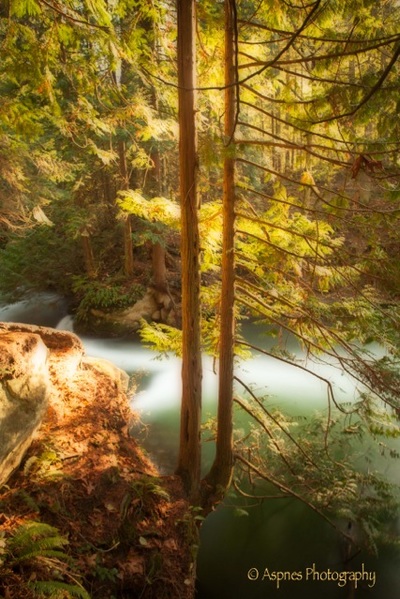







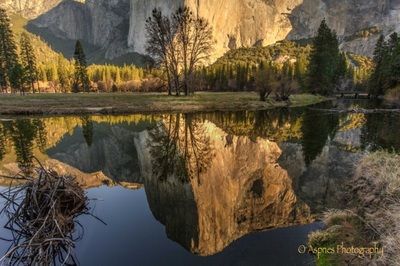










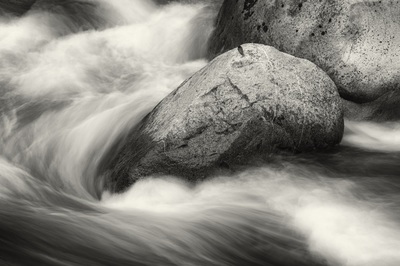




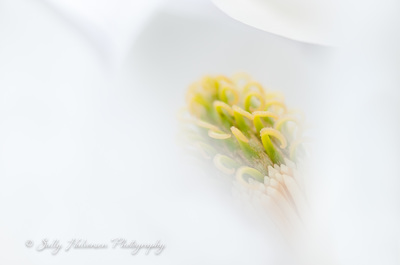














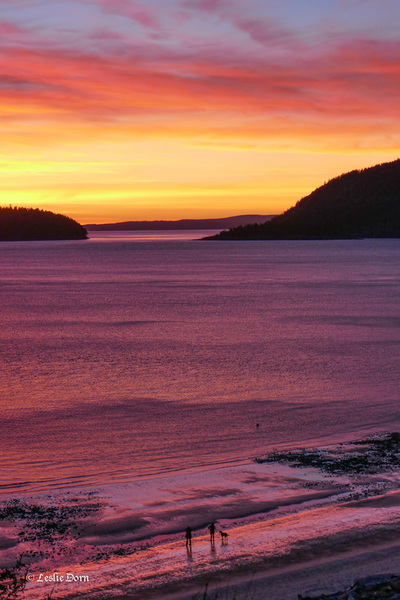


 RSS Feed
RSS Feed